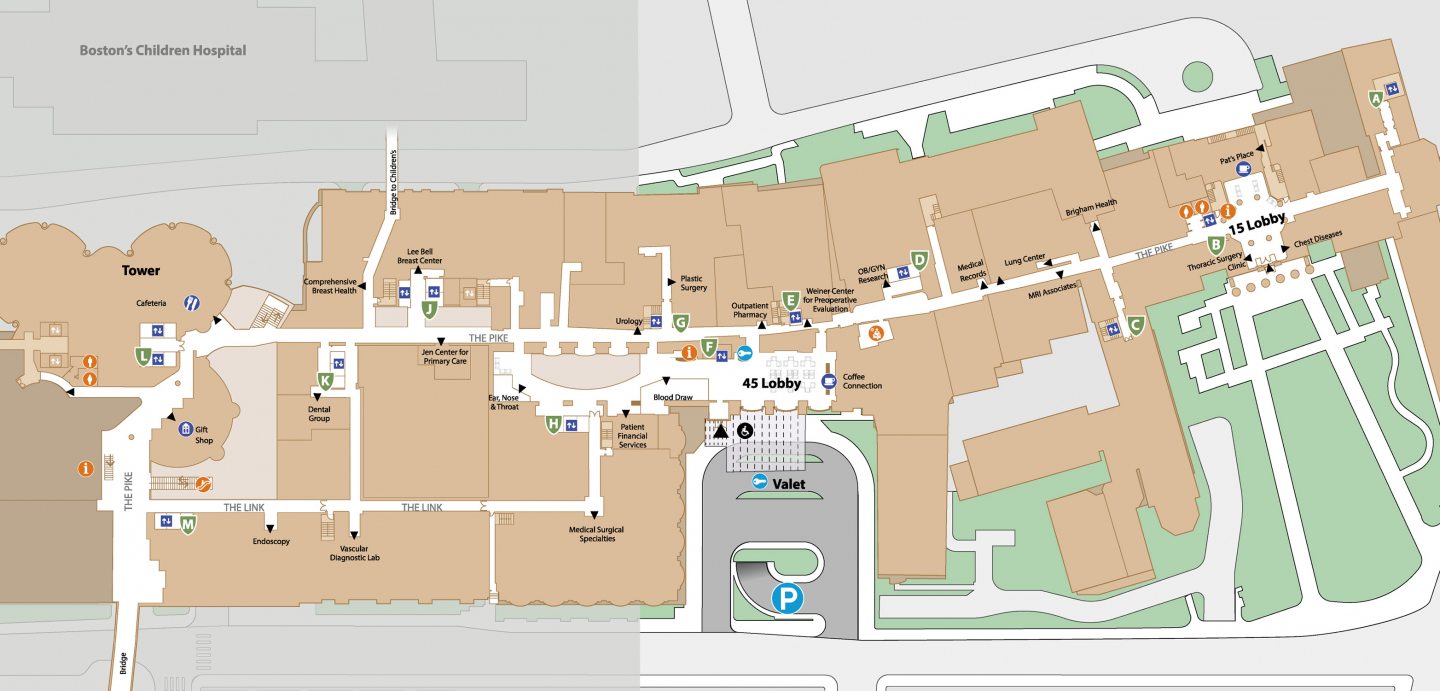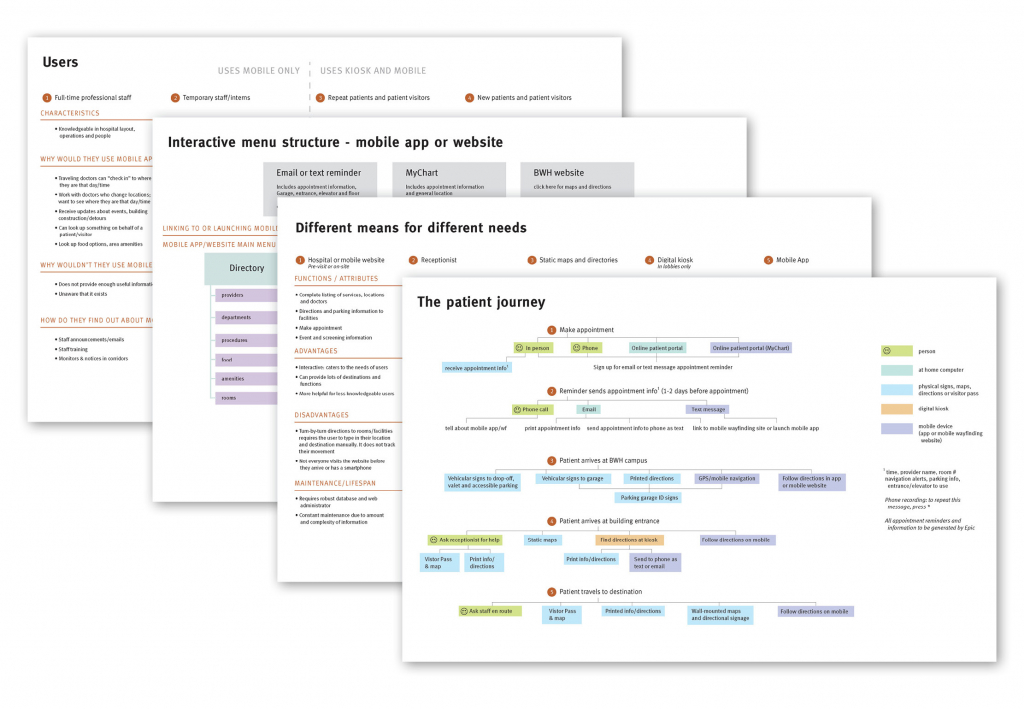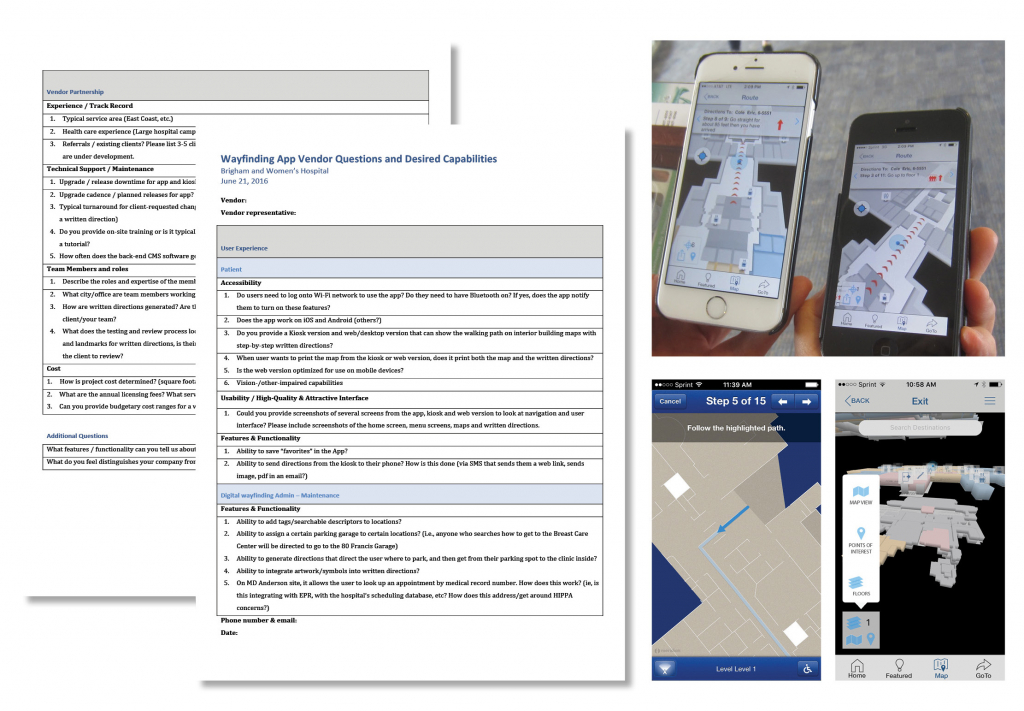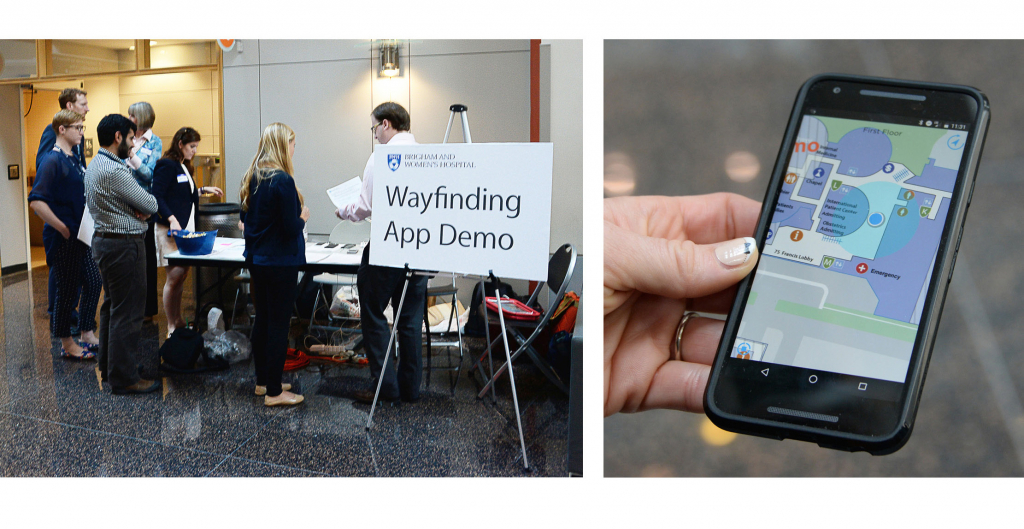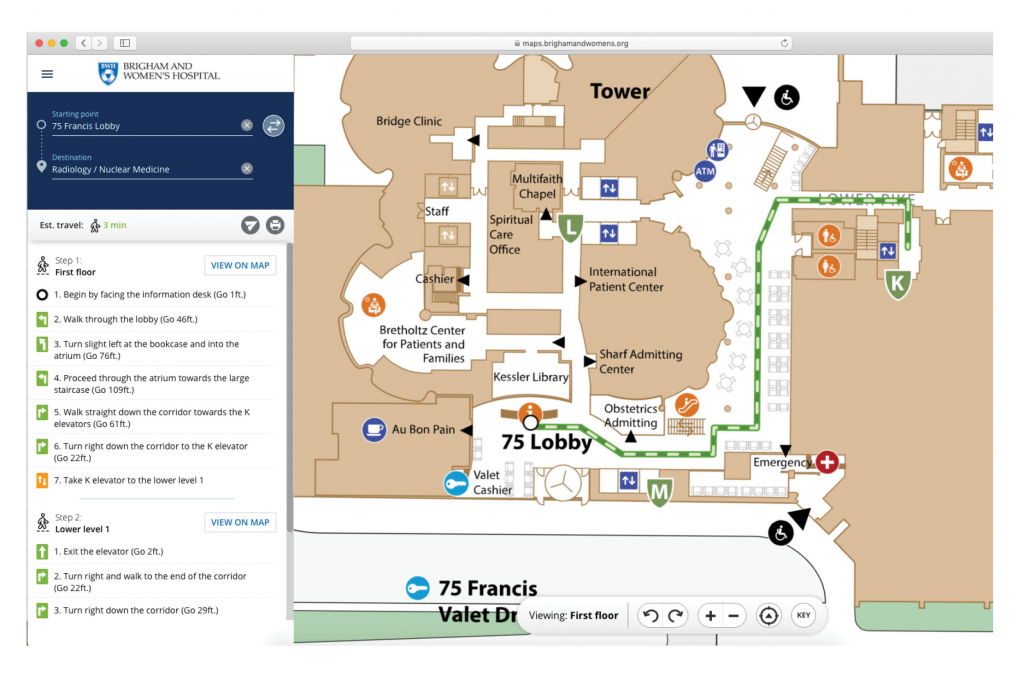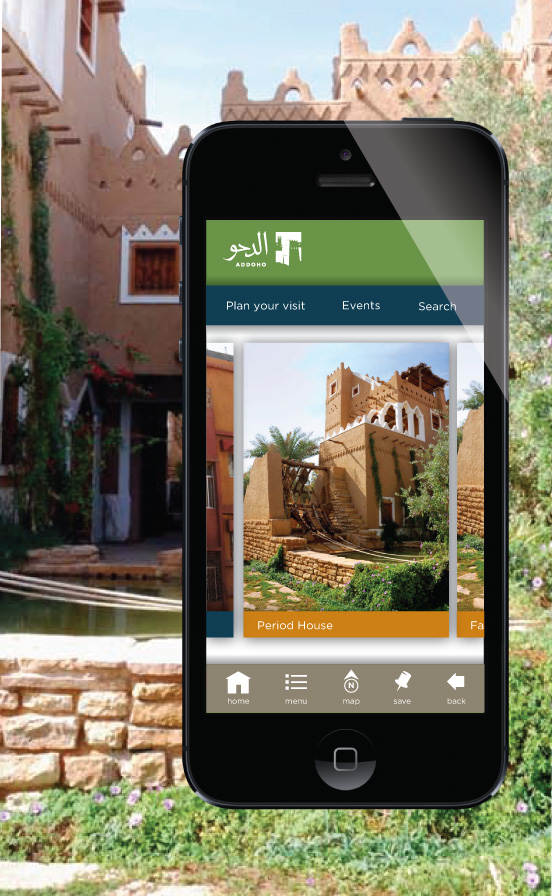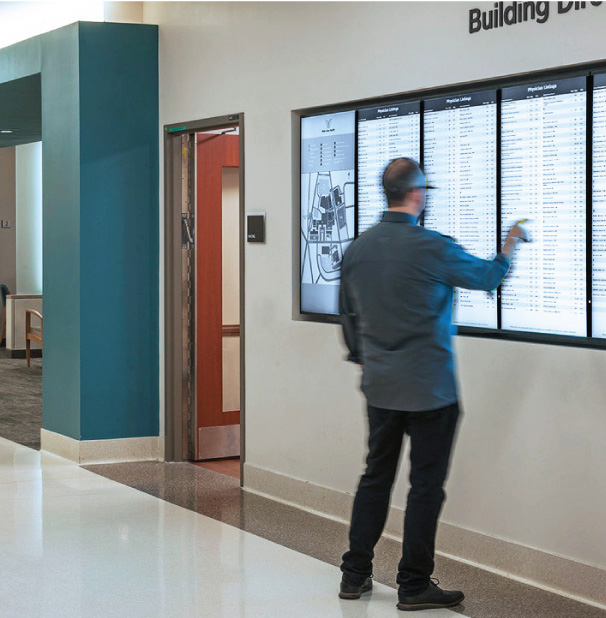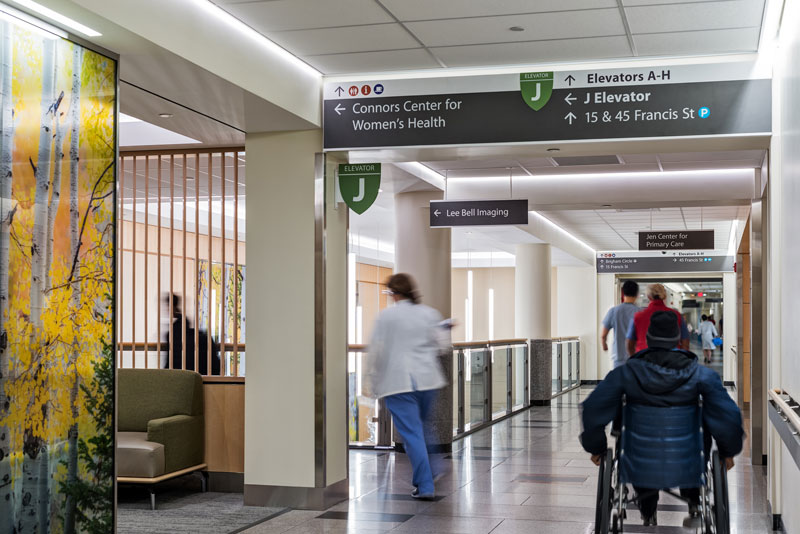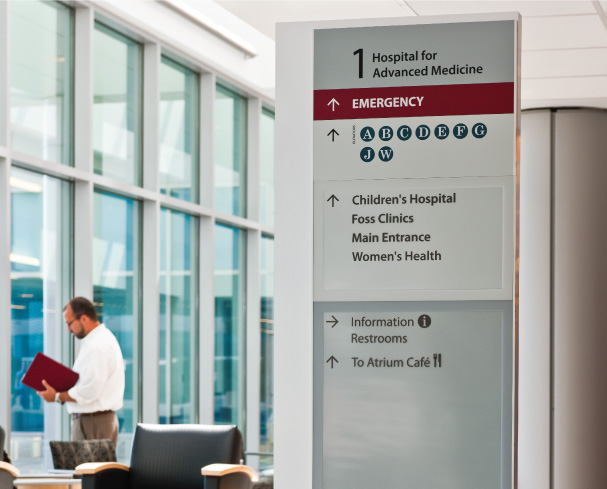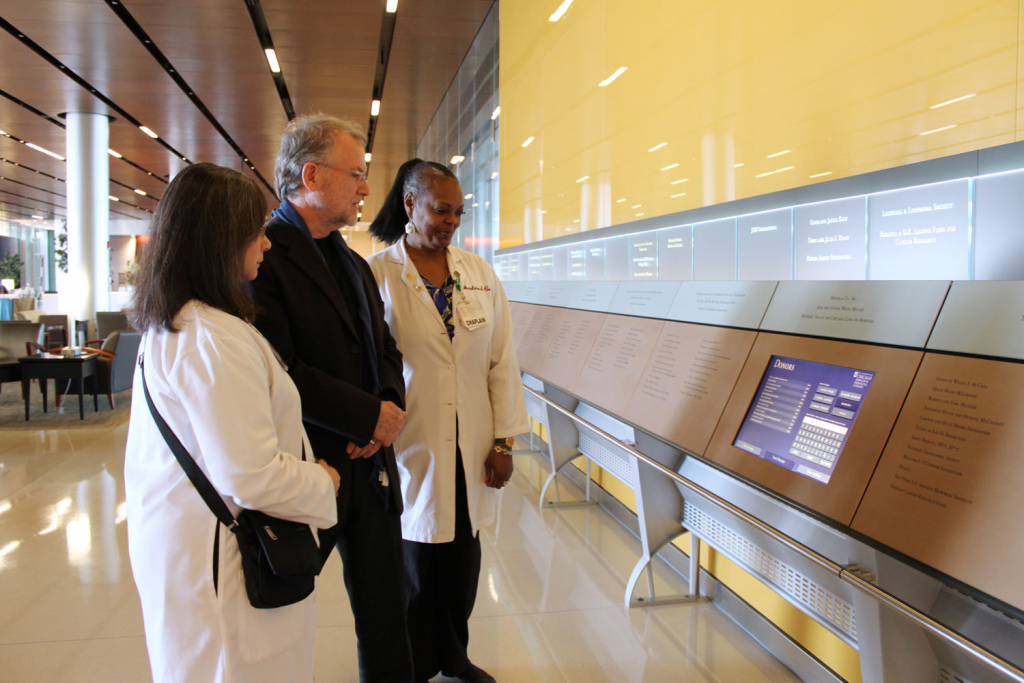Adding digital tools to conventional sign programs can help visitors plan their trip more effectively. When Brigham and Women’s Hospital asked which digital tools they should consider in addition to traditional signage, CGD extensively researched smartphone-based wayfinding, evaluating options and performance in the field. This research included:
- Conducting extensive market research into indoor wayfinding technologies
- Defining desired vendor/product features and requirements
- Interviewing companies that fulfilled all of the requirements
- Evaluating beacon versus magnetic positioning technologies
- Visiting hospitals with “up and running” digital wayfinding systems: the National Institutes of Health, Stamford Hospital, Cleveland Clinic, Boston Children’s Hospital and University Hospitals of Cleveland; meeting with their digital wayfinding teams to learn best practices and lessons learned; on and off-site testing of their digital wayfinding kiosks and apps
Once the vendor was selected, CGD worked extensively with them and the client group on the web and app development. This included conducting a “Demo Day” where Brigham Hospital staff and patients were invited to test 2 technology options and give feedback. CGD also played a prominent role in directing the digital map style, determining landmarks and descriptions for text directions, nomenclature, and testing. These digital wayfinding products tools now deployed at two Brigham hospital locations: Main Campus and Faulkner Hospital.
Visit the Brigham and Women’s Wayfinding Website
See Faulkner Hospital Wayfinding in the App Store
